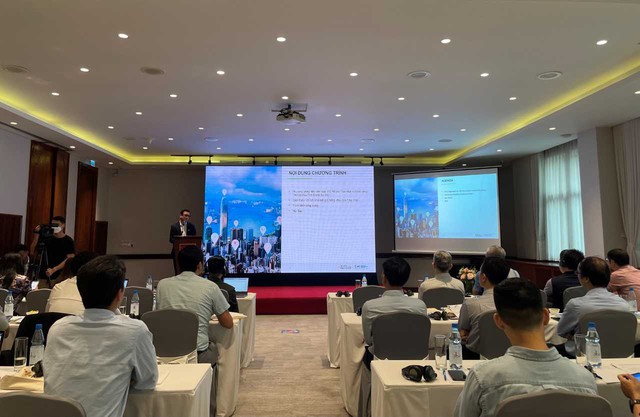IFC helps boost climate resilience of buildings in Viet Nam
VGP - The International Finance Corporation (IFC) has developed Building Resilience Index (BRI) to help local developers improve the resilience of buildings in Viet Nam.

The workshop, themed “Introducing Building Resilience Index–an innovation of IFC”, takes place in Ha Noi, April 20, 2023 - Photo: VGP
As Viet Nam aims to shift to a low-carbon and sustainable economy, the IFC is helping Viet Nam to make buildings and cities more climate resilient, promoting a safe and healthy environment for residents while mitigating the social and financial impacts of natural hazards.
As a web-based hazard mapping and resilience assessment framework, the BRI evaluates location-specific climate-related risks for real estate projects and the resilience measures which have been implemented.
This innovation makes it easy for developers, locators, homebuyers, and other stakeholders to assess, improve, and disclose the resilience of buildings.
Viet Nam is among the countries most vulnerable to climate change, having lost about US$10 billion in 2020 (3.2 percent of its GDP) to climate impacts.
Low lying and exposed to natural hazards, about 300 coastal urban areas—providing livelihoods for a growing and rapidly urbanizing population—especially bear the brunt.
With support from the Australian Government, the BRI program in Viet Nam has identified and integrated the country's hazard maps into the BRI app. It will select three pilot projects spanning the residential, office, retail, educational, and hospitality sectors to assess and build resilience.
IFC will also promote the uptake of BRI in the local construction industry by raising awareness and delivering capacity training to building developers and other stakeholders.
In the face of threats posed by a rapidly changing climate, it is vital to ensure that buildings are resilient to natural hazards such as cyclones, flooding, fire and landslides, especially in Viet Nam's urban areas, where so many people live, said Thomas Jacobs, IFC Country Manager for Viet Nam, Cambodia and Lao PDR.
"By equipping local developers, investors, and policymakers with the BRI, we look forward to helping strengthen the country's climate agenda, promoting a greener, sustainable, and more inclusive economy", shared Thomas Jacobs.

